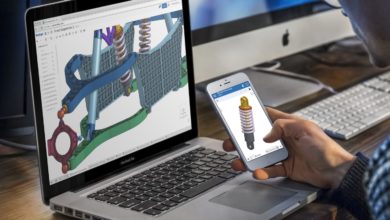How Inked Images are Transferred Between Different Media Types

Offset printing is an established, popular printing method in which an inked image is transferred from a solid plate to the ink drum and then into the printing press. The offset method uses a single, uniform image carrier when used in conjunction with the vertical lithographic method, which involves the attraction of water and oil with a printing brush. This printing method is ideal for low-volume, high-quality printing jobs that require high-resolution, full-color images. This method can produce an image that is the same size as the original illustration or print and requires very little retouching after it has been completed.
Because the image that is printed on an offset printing plate is the exact same size as the original, there is no distortion at all. There are no gradations or levels within the image; instead, everything is just as it appears on the original, right down to the smallest details. Because the flatbed scanner that is used in this method works by magnifying the image several times to create small details that can be individually adjusted, Offset printing has the lowest cost per line item of any technology that uses this method of production.
Using only one ink type, offset printing utilizes a special type of paper that has similar properties to cotton. In order to transfer the image from the plate onto paper, a special dye is mixed with the image. The dye is used to create a color palette that allows the printer to mix the appropriate amount of ink to provide the colors needed for each printed panel. The process is completed with the use of a solid rubber stamp that is shaped and printed with specific colors that match those colors provided by the ink. By using multiple solid rubber stamps, the number of imprinted panels is virtually unlimited.
This type of printing methods is particularly well-suited for extremely large items, such as banners or billboards, because the equipment is able to move quickly around the area being printed. Because of the large print area available, offset lithography often provides customers with high quality prints that can be used for advertising or promotional purposes. Due to the high quality of the final product and the consistent nature of the image reproduction, offset printing methods are ideal for creating printed products that are attractive and professional-looking.
Small businesses and personal photographers often utilize offset printing to create inked image prints that are perfect for use as custom displays or part of promotional campaigns. Large companies that purchase larger quantities of merchandise may use offset lithography to create professional-looking advertisements that feature their logo or that promote a specific service. The consistent quality of the output and the ability to produce high-quality prints with little minimum effort make offset printing a popular choice for businesses that need to produce professional-looking printed products.
There are two ways that an inked image can be transferred (or offset) between different media. First, a transfer paper, such as rubber ink or acrylic adhesive, is used to transfer the image directly to the receiving media. This method is commonly used when the final product is to be displayed on a shelf or within a display case. Second, an offset machine can mechanically transfer the image electronically between various media, such as film, fiberboard, or fabric. These printers are commonly used for rapid prototyping and production testing of new designs.




